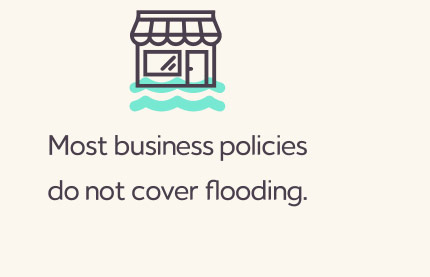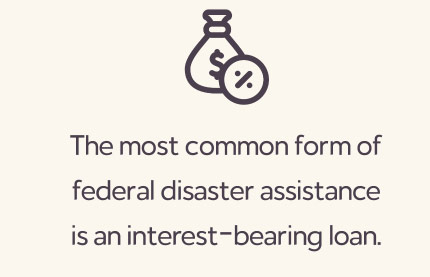Commercial Flood Insurance
Why you need Commercial Flood Insurance for your Business.
Commercial flood insurance is crucial for any business that operates in areas prone to flooding. Floods are considered the number one natural disaster in the United States and can cause extensive damage to business properties, equipment, and inventory, which can lead to significant financial losses.
Flooding affects millions of businesses annually, even if they are not in a flood zone. Commercial flood insurance can help protect your business from the financial impact of flood damage. It can cover the costs of repairs or replacements for damaged property and the expenses associated with business interruption, such as lost revenue and extra expenses incurred during the recovery period.




Commercial Flood Insurance Coverages
Building
You can purchase basic building coverage up to $500,000, which covers repair or replacement and most installed improvements up to the coverage limit or the assessed replacement cost value of the building. Items typically covered are electrical and plumbing systems, central air conditioning, furnaces and water heaters, and flood-damaged interior and exterior finishes.
Even if you lease, you should still consider purchasing flood insurance to cover any improvements you have made to your location. For more information, contact your Bankers Agent or visit floodsmart.gov.*
Contents
On a commercial flood policy, contents coverage pays for damage to inventory, merchandise, machinery, and other contents and can be purchased up to $500,000 in coverage. If you are a tenant, you can apply 10% of your content’s coverage for any “improvements or betterments” made to the building at your expense.
Choose a Reputable Insurance Provider
Bankers is an authorized carrier for the National Flood Insurance Program (NFIP). Which means you will get the same rate at Bankers that you might get at another NFIP authorized carrier, so why not choose a company that will provide the exceptional customer service you deserve?
We understand that the NFIP flood policy may not meet the needs of some businesses. So, we have also partnered with several companies to grant access to their private and excess commercial flood products.
If your property meets the eligibility requirements of these private companies, their options will be available during the quoting process. Your agent will provide you with all options to ensure you get the rate and insurance that works best for you.
*Bankers is not affiliated with the Private and Excess Flood Companies, policies will be issued, serviced, and claims will be handled by the issuing company, not Bankers Insurance.
